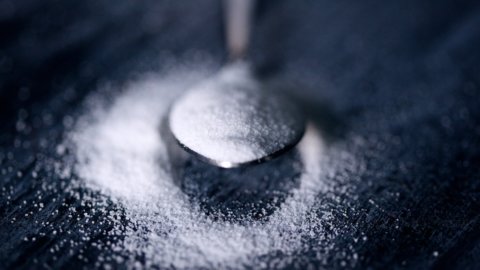There are not only i grain or coffee records to mark the recovery of agricultural prices in the year of the return of inflation. So too cup sugar, even under the fire of dieticians, is approaching Christmas with prices on the rise, after difficult years. A ton of white sugar, reports the French agency Agritel, trades on the world market at 510 dollars against 340 a year ago, with an increase of nearly 50 percent. The prices are affected by the sharp drop in Brazilian sugar cane production due in part to the frosts which hit the south of the immense country, in part at logistics difficulties which have held back exports.
The result is the reduction of surfaces intended for cultivation for next year: the production of cane sugar, according to the Carioca giant Unica, is thus destined not to exceed 525 million tons, 13,3 percent less than this year's harvest, which is only partially finished in cakes, sodas or other specialty foods. In fact, more than half of the sugar cane ended up in ethanol, the fuel which, favored by the increase in oil, has absorbed 55 percent of the product at increasing prices. During the year on the Rotterdam market the price of a cubic meter of ethanol + rose from 760 dollars to a maximum of 1.740, to then settle down at around 1.400 dollars. In short, the increase is more due to OPEC than to pastry chefs.
But it's hard to bet on increased production after that three years of declining crops, even if the prospects for demand remain good: the unknown environmental factor puts the multinationals' forecasts to the test. Suffice it to say that the yield per hectare did not exceed 67 tonnes per hectare against the 85 achieved in the record harvests of 2003/04. “For the 2022/23 season – said the technical manager of Unica, Antonio Padua Rodriguez – we aim for a production of 560 million tons, with an increase in yield of 8,5 percent. But before starting sowing we will have to wait for February, when satellite images will allow us to understand the arrival of new ones frosts, more and more frequent".
The climatic uncertainty, which has also involved other areas (see Thailand) has however had the positive effect of dispose of stocks accumulated in the past, to the benefit of the prospects also for European farmers. The increase in prices has so far been less significant in the Old Continent, but quotations have nevertheless exceeded the barrier of 400 euros per ton (up 11 percent) and future contracts between farmers and industrialists could reach 430 euros per ton. Even the Italian Zuccheri-Coprob supply chain, the most important Italian producer in a market dominated for the rest by the French and Germans, speaks of satisfactory results., despite "a climatic trend adverse to cultivation due to high temperatures and low rainfall”.
But to counteract the effect of climate change contributes in this case the quantum leap in technology, based on new genetics tolerant to plant pathogens and resistant to climate change, precision agriculture, the use of robotics and mechatronics. "With these revolutionary agricultural management systems, we have the possibility of carrying out constant and punctual analyzes of the data which allow monitoring and maximum efficiency in the management of the land and the resources used" says Massimiliano Cenacchi, agricultural director of Coprob-Italia Zuccheri.
Even for sugar, from Brazil to the Po Valley, we can speak of a new agriculture that makes use of solar powered robots capable of sowing two hectares a day and of memorizing, after some time, the precise sowing point to return to it after months for weeding, thus allowing to clean the weeds. Or systems satellite mapping which allow you to set the tractor guides in order to avoid overlapping of treatments.





